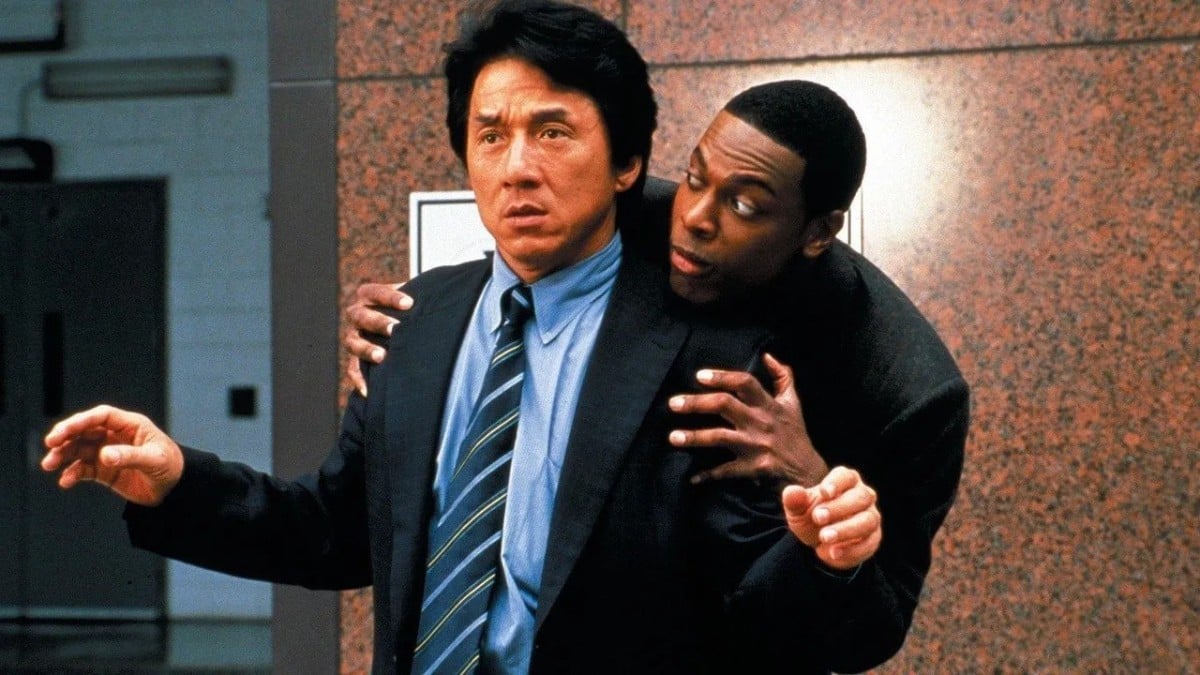
Jamesy Boy is an unconvincing portrait of a teen’s fall into a pit of crime and his eventual redemption that comes with time served in the pen, for two reasons. First, a formulaic script from Lane Shadgett and Trevor White puts its delinquent protagonist, James Burns, into a lot of questionable situations that seem engineered to ruin the character and forecast his eventual downfall – although they makes precious little sense. Second, newcomer Spencer Lofranco looks dazed and confused as Burns, although he also looks too squeaky clean and model cute to pass as a tormented teenage thug. Although it is based on a true story (of the film’s co-producer), Jamesy Boy is definitely not a genuine representation of Burns’ troubled past.
Shadgett and White’s script spends a lot of time filling in Burns’ backstory with exposition and the first 10 minutes of Jamesy Boy go through the difficult circumstances of the protagonist’s life: he was thrown out of school for a criminal record, which included vandalism and assault, while he also spent 15 months in juvenile detention for bringing home a gun. Instead of showing these events though, school board members and correctional officers inform the audience of these crimes in the most banal way – listing off his misdemeanors, lifelessly, as Burns watches calmly from his seat. In the opening scene, a prison guard shoves Burns’ face into the ground for picking a fight on the bus. “Way to make a good first impression,” the guard probes sarcastically. It may have been better for director White and co-writer Shadgett to give off a good first impression of their drama by showing us the incident instead of telling us about it.
Thankfully, Jamesy Boy does pick up shortly after these plodding opening minutes, if mostly for very good supporting performances of the periphery figures in Burns’ life. We meet his mom, Tracy (a blistering, if underused Mary Louise-Parker), who tries to inspire her son to make something of his life, although her odds of doing the same with back-end jobs are just as low. Then, there is a promiscuous girlfriend, Crystal (Rosa Salazar), who tempts Burns into shoplifting, substance abuse and meaningless sex – and later, into a job helping her drug dealer friend Roc (Michael Trotter). Softening up the bruised bad boy is a kind convenience store cashier, Sarah (Taissa Farmiga), who sees something sweet and kindred in the teen criminal.
Trevor White’s debut film intercuts between these flashbacks – that comprise more than half of the running time – and Burns’ sentence at a maximum-security prison. In the hole, he befriends a prison veteran, Conrad (Ving Rhames, terrific as usual), who inspires him to put down his fists and pick up a pencil. Among the wiry officers we also meet is Falton (James Woods), a vindictive and verbally abusive man who has no problem threatening the wily teen. Although the role is tired – the actor is forced to say “Once a loser, always a loser” to the bedraggled protagonist – Woods does give an effort not to sleep through the material.

As the baby-faced delinquent, whose nickname gives the film its title, Lofranco looks lost and overwhelmed by the role. He portrays danger mostly by posing, brooding in a black hoodie and slouching his head to the side. He looks too much like an Abercrombie and Fitch model to convincingly play a broken, misunderstood rebel and it doesn’t help that the sterling supporting players around him give fine, if one-note, performances, making Lofranco look even more unprepared for the titular part.
Beyond the flat Lofranco, who does not have the gravitas or grit to carry the film, the screenplay is also a lost cause. It paints an unflattering portrait of its protagonist by showing him making foolish decisions that feel predicated to bring his life down. Since the writers also want to show the character restore his goodness by the end, the about-face seems even more unnatural.
As a small-time dealer, Burns routinely brings back weapons to his house and to Roc’s place. He also swerves down the street in a souped-up Oldsmobile that attracts police attention (foolish since there is dope in the trunk) and then attempts to rob a manager without explanation. The film depicts Burns as a cocky chump, eager to prove his bad boy reputation; however, the ill-brained decisions his character makes would never fly in the criminal enterprise he was a part of.
At one moment in Jamesy Boy, Burns whines that he is “tired of being a charity case.” Unfortunately, the pedestrian screenplay portrays him as such, martyring a cocky criminal with a big heart and resolve to do better. Lofranco does not have the acting range to portray a despaired delinquent or an inmate trying to change his life through writing and accepting forgiveness. He is simply too slight a presence to carry a film that is already a rather tame look at a life of crime, resulting in an end product that is an earnest, but unconvincing look at a rebel’s road to redemption.










Published: Jan 17, 2014 01:14 pm